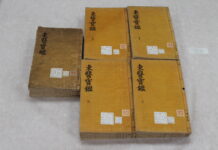
Herbal Choices in Shanghan Theory for Respiratory Symptoms:
By Daniel Cho, L.Ac. (email: c0454445@gmail.com)
This month, we will study herbs commonly used in formulas for treating respiratory diseases within Shanghan theory. In classical Shanghan formulas, certain herbs play a crucial role in addressing respiratory issues. Ma Huang, Xi Xin, and Ting Li are frequently employed for their potent effects on the respiratory system.
Each herb brings unique properties to a formula, aiding in symptom relief and supporting overall lung function. We will examine each herb’s characteristics, specific actions, and traditional applications in more detail.
Ma Huang: Symptom Indicator Score: +, Frequency of Use: +++
① Clean TIOM chart: except for T (temperature or aversion to cold/heat), the rest of the I/O/M charts are generally clean, meaning the patient doesn’t have issues with eating, urinating, defecating, and sleeping.
② Why not: we can consider using Ma Huang when there aren’t specific reasons not to use it.
Cautions: people who are underweight, weak, have heart palpitations, chest fullness, insomnia, low appetite, indigestion, dry mouth, or fatigue induced by sweating.
CAPE: Normal to overweight, with strong stamina and mental stability.
③ Main Symptoms: we can consider using Ma Huang when the patient has a clear, watery nasal discharge or phlegm and other respiratory symptoms such as coughing, sneezing, or shortness of breath triggered/aggravated by the cold stimulus. If such symptoms are present, you can consider selecting Ma Huang first.
④ Possible Symptoms: body aches, mild edema.
Xi Xin: Symptom Indicator Score: +, Frequency of Use: ++
Main Symptoms ①You can consider Xi Xin (as a second choice when Ma Huang cannot be used) for clear, watery nasal discharge and phlegm, as well as other respiratory symptoms such as coughing, sneezing, and stuffy nose that are triggered/aggravated in cold conditions.
Possible Symptoms ②Mild indigestion ③Heartburns and gastric reflux.
Tendency ④Xi XIn is mostly used as an assisting herb to other heat-generating herbs for people with cold intolerance and coldness of the limbs.
Ting Li: Symptom Indicator Score: ++, Frequency of Use: +
Main Symptoms ①We can consider using Ting Li (mostly Ting Li Da Zao Xie Fei Tang) after ruling out Ma Huang and Xi Xin for clear, watery nasal discharge, phlegm, and other respiratory symptoms such as coughing, stuffy nose, sneezing, wheezing, and shortness of breath that are triggered/aggravated by cold stimulus ②Shortness of breath is common.
Possible Symptoms: ③Mild edema
Ma Huang → Xi Xin → Ting Li
|
Ma Huang (mostly) |
Xi Xin (sometimes) |
Ting Li (rarely) |
|
Respiratory disorders characterized by clear, watery nasal discharge and phlegm that are triggered/aggravated in cold conditions (cold stimulus) |
||
|
First choice |
Second choice |
Last choice |
|
-Clean TIOM chart: No I/O/M issues -Why Not: no contraindications of Ma Huang |
When Ma Huang cannot be used |
When there is no right formula among Xi Xin or Ma Huang formulas |
|
Shortness of breath may appear. |
Shortness of breath is absent |
Shortness of breath appears in most case |






































